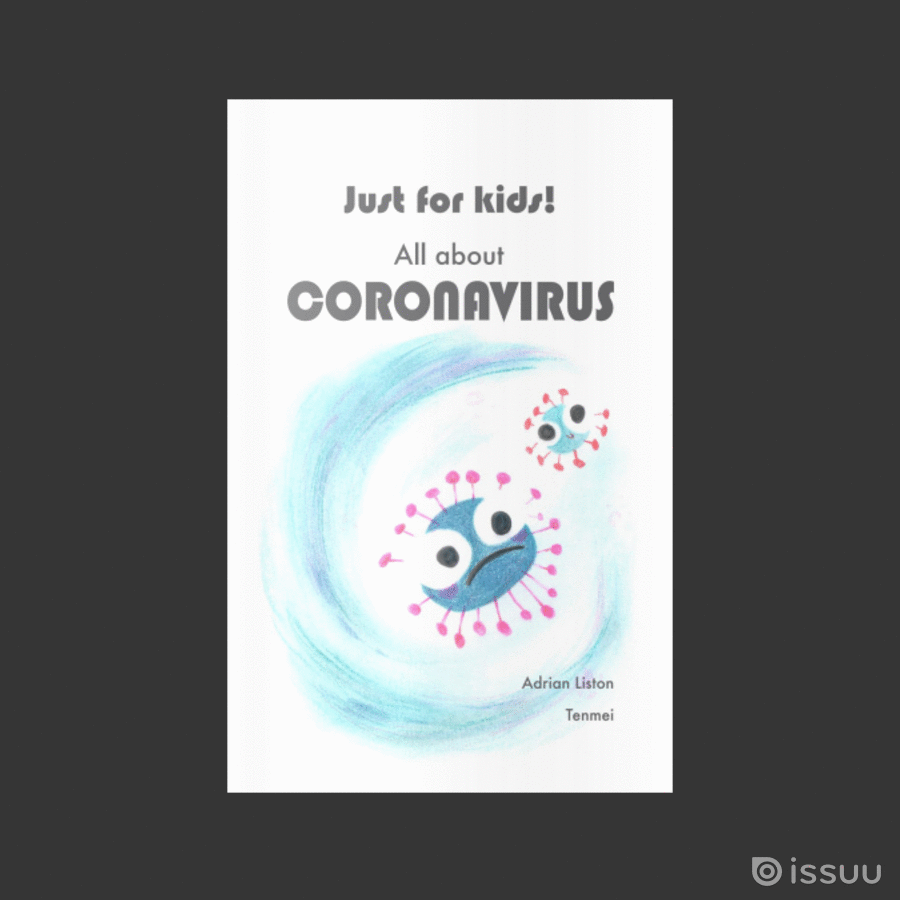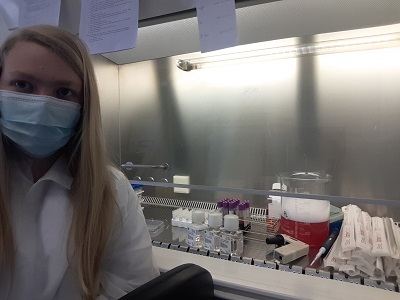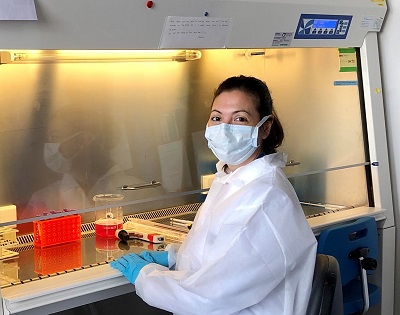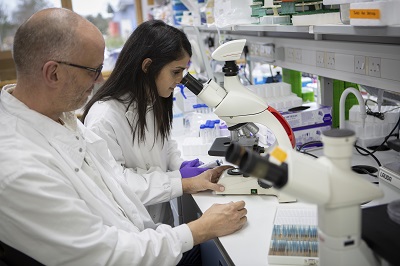What we are doing during the COVID-19 pandemic
 Wednesday, June 3, 2020 at 3:05PM
Wednesday, June 3, 2020 at 3:05PM This is a strange time for any workplace. People suddenly working from home, large changes in job duties, some people left without much to do while others are expected to manage whole new realms of bureaucracy while also continuing their full-time job. For us, as an immunology lab, this pandemic has an added dimension of peculiarity: our work is directly relevant to the ongoing situation.
 Looking back on how we dealt with the outbreak, we were ahead of the curve. We put in place strict social distancing and work-from-home measures well before our institutes / government did (and, I would argue as an immunologist, our lab rules were more science-based than those later imposed on us). We also started a public education program on COVID-19, with an interactive Virus Outbreak simulator, an illustrated series translating scientific articles into lay language and even released a kid's book explaining Coronavirus (with special thanks to lab members Dr Teresa Prezzemolo, Julika Neumann and Dr Mathijs Willemsen for translating this into different languages).
Looking back on how we dealt with the outbreak, we were ahead of the curve. We put in place strict social distancing and work-from-home measures well before our institutes / government did (and, I would argue as an immunologist, our lab rules were more science-based than those later imposed on us). We also started a public education program on COVID-19, with an interactive Virus Outbreak simulator, an illustrated series translating scientific articles into lay language and even released a kid's book explaining Coronavirus (with special thanks to lab members Dr Teresa Prezzemolo, Julika Neumann and Dr Mathijs Willemsen for translating this into different languages).
We also had lab members head back to the clinic to help with the capacity issues created by COVID-19. Dr Frederik Staels and Dr Erika Van Nieuwenhove suspended research to increase their clinical duties, and Dr Stephanie Humblet-Baron and Dr Mathijs Willemsen were on-call in case the system was overwhelmed.
 Silke Janssen, processing patient blood
Silke Janssen, processing patient blood
Our lab never completely shut-down though - we had important work that needed to be done. I'd like to call out Dr Susan Schlenner, Dr James Dooley and Dr Lubna Kouser who led the unglamorous but key administration on securing the safety of team members who had to be in the lab. Our Leuven lab was central to the processing of clinical COVID-19 samples. We usually think of clinical trials being run by MDs, but the work does not end after the blood is collected. I really want to call out the key contributions of Silke Janssens and Dr Teresa Prezzemolo. Without them, coming in all day, every day to process blood samples, clinical research of COVID-19 would have been crippled.
 Dr Teresa Prezzemolo in the L2 labOur team, lead by Dr Stephanie Humblet-Baron, also analysed the samples prepared. We performed an ultra-high parameter analysis (far beyond state-of-the-art hospital diagnostics) of the T cell phenotype of COVID-19 patients: months of work from Dr Teresa Prezzemolo, Silke Janssens, Julika Neumann and Dr Mathijs Willemsen. Data analysis by Julika Neumann, Dr Carlos Roca, Dr Oliver Burton and Dr Stephanie Humblet-Baron identified a novel link between IL-10-producing Tregs and COVID-19 severity. We are now following this up to see if the link is useful as a biomarker or even is mechanistic in disease program. We have made our data an open resource (link), allowing other groups around the work to analyse our work. We are continuing to follow these patients and will soon have more and more information about why some patients remain completely healthy and others develop severe, even fatal, disease.
Dr Teresa Prezzemolo in the L2 labOur team, lead by Dr Stephanie Humblet-Baron, also analysed the samples prepared. We performed an ultra-high parameter analysis (far beyond state-of-the-art hospital diagnostics) of the T cell phenotype of COVID-19 patients: months of work from Dr Teresa Prezzemolo, Silke Janssens, Julika Neumann and Dr Mathijs Willemsen. Data analysis by Julika Neumann, Dr Carlos Roca, Dr Oliver Burton and Dr Stephanie Humblet-Baron identified a novel link between IL-10-producing Tregs and COVID-19 severity. We are now following this up to see if the link is useful as a biomarker or even is mechanistic in disease program. We have made our data an open resource (link), allowing other groups around the work to analyse our work. We are continuing to follow these patients and will soon have more and more information about why some patients remain completely healthy and others develop severe, even fatal, disease.
 Dr Dooley and Dr Kouser (pre-COVID-19)We are not just clinical immunologists - we are also basic research immunologists. Mysterious virus triggering immune-mediated destruction of the tissue? We can deal with that. The whole lab contributed to the design of a new potential therapeutic, but I would especially like to call out the contributions of Dr James Dooley, Dr Oliver Burton, Dr Lubna Kouser and Fran Naranjo. Manufacturing is now complete and we are moving to pre-clinical testing. Hopefully we have a vaccine for SARS2 before our treatment is complete, but it is designed to deal with an unknown SARS3 equally well.
Dr Dooley and Dr Kouser (pre-COVID-19)We are not just clinical immunologists - we are also basic research immunologists. Mysterious virus triggering immune-mediated destruction of the tissue? We can deal with that. The whole lab contributed to the design of a new potential therapeutic, but I would especially like to call out the contributions of Dr James Dooley, Dr Oliver Burton, Dr Lubna Kouser and Fran Naranjo. Manufacturing is now complete and we are moving to pre-clinical testing. Hopefully we have a vaccine for SARS2 before our treatment is complete, but it is designed to deal with an unknown SARS3 equally well.
Suffice it to say, we have been as busy as we've ever been, and we will likely remain just as busy well after COVID-19 stops making the headlines. Which brings me to my final plea. Don't forget about scientific research. Unsung heroes during the pandemic, our staff are putting in an enormous effort. And yet we face an incredibly uncertain funding situation. Universities and research institutes have taken an enormous financial blow with this pandemic, and unless governments step in with a large financial rescue package, those scientific research staff who got us through the pandemic are going to be laid off in huge numbers. Even if you don't care about the moral imperative of looking after the people who stepped up when we needed them, there will be a SARS3 or novel flu pandemic in the future. We need to secure the research infrastructure to combat them right now. Science is not a factory that can be switched on and off at will - we need to maintain research excellence, scientific equipment and most of all key staff contracts over the long-term.
 Coronvavirus,
Coronvavirus,  Liston lab,
Liston lab,  science careers
science careers 




Reader Comments